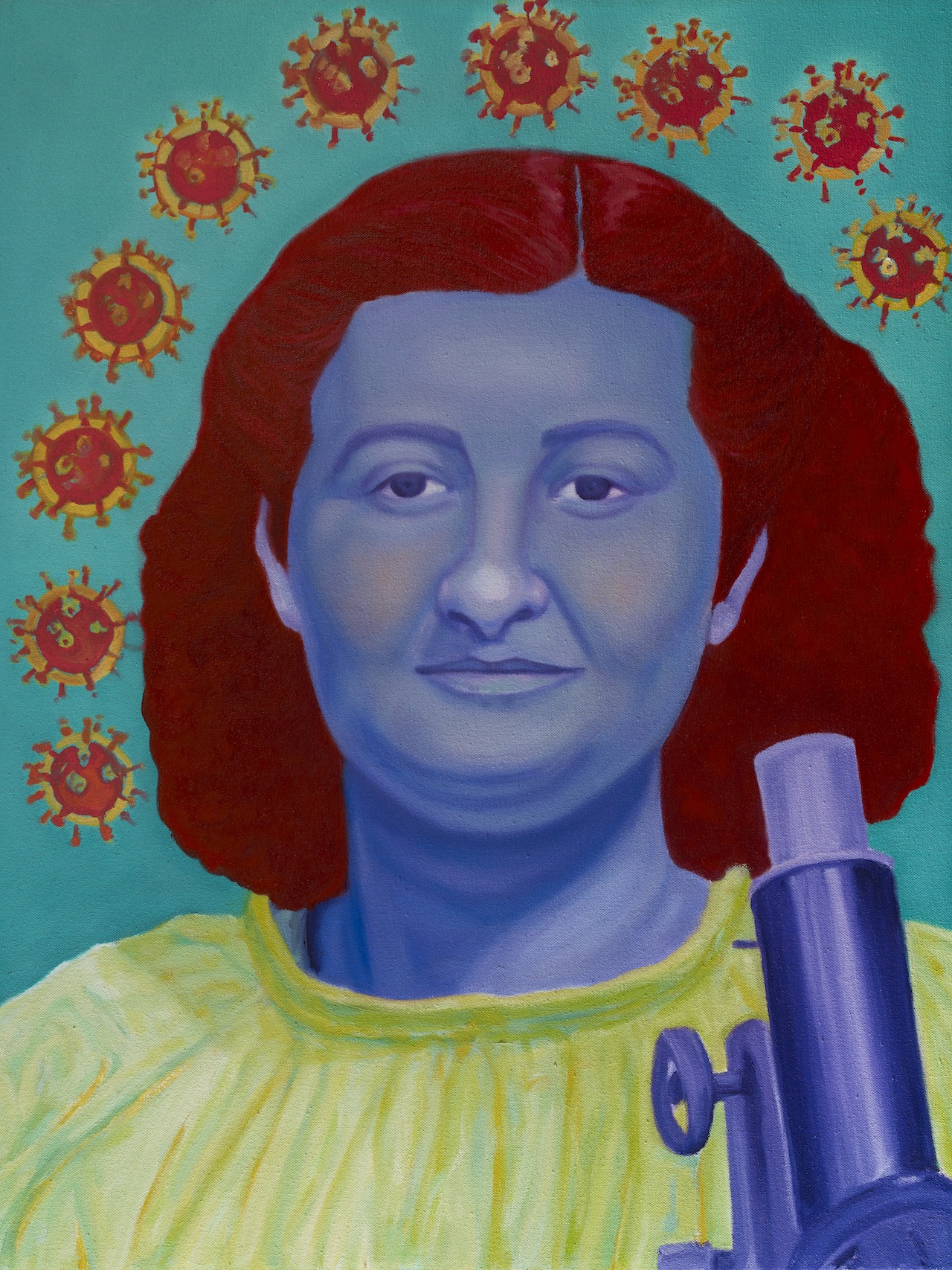Jennifer Mondfrans
Thematic Painter
June Alameida
- Virologist
- 1930-2007
- 18x24
Dear You,
If you had told me that I would be the first to discover the coronavirus, I wouldn’t have believed you.
After all, I grew up in a tenement in Glasgow and my formal education ended when I left school at 16. But once I got a job as a laboratory technician, I was determined to learn more science. It was at the Ontario Cancer Institute that I learned how to use an electron microscope. Turns out, I was quite good at it.
I became a pioneer of virus imaging. The microscope revealed the unseen world that affects us all.
In 1964, Dr. David Tyrrell, who oversaw research at the Common Cold Unit in Salisbury, Wiltshire and his team had collected samples of a flu-like virus they labeled “B814” from a sick schoolboy in Surrey but had considerable difficulty in cultivating it in the lab. Dr. Tyrrell sent a sample to me so the virus could be seen under the electron microscope. The sample was curious. It looked similar to influenza viruses, but I knew it wasn’t the same.
I identified what became known as the first human coronavirus.
I had actually seen particles like this before while investigating mouse hepatitis and infectious bronchitis of chickens. But my paper to a peer-reviewed journal was rejected because the referees said the images I produced were just bad pictures of influenza virus particles.
But I persisted. The new discovery from strain B814 was written up in the British Medical Journal in 1965 and the first photographs of what I had seen were published in the Journal of General Virology two years later.
We named it coronavirus because of the crown or halo surrounding it on the viral image.
It’s extraordinary that my work is now known because of the COVID-19 coronavirus pandemic. But I am hopeful that my discovery will lead to a cure, perhaps by many who, like myself, came from humble beginnings to bring fresh insight and understanding into science.
Love,
June


